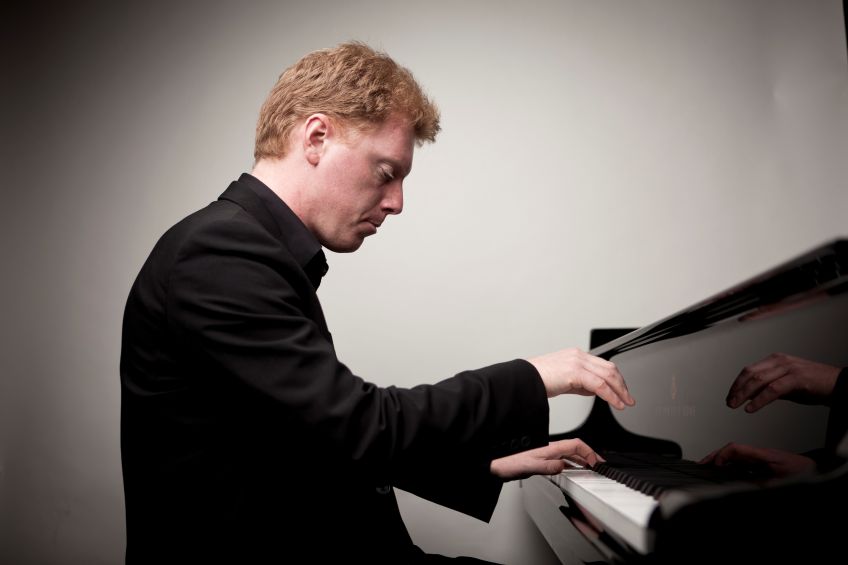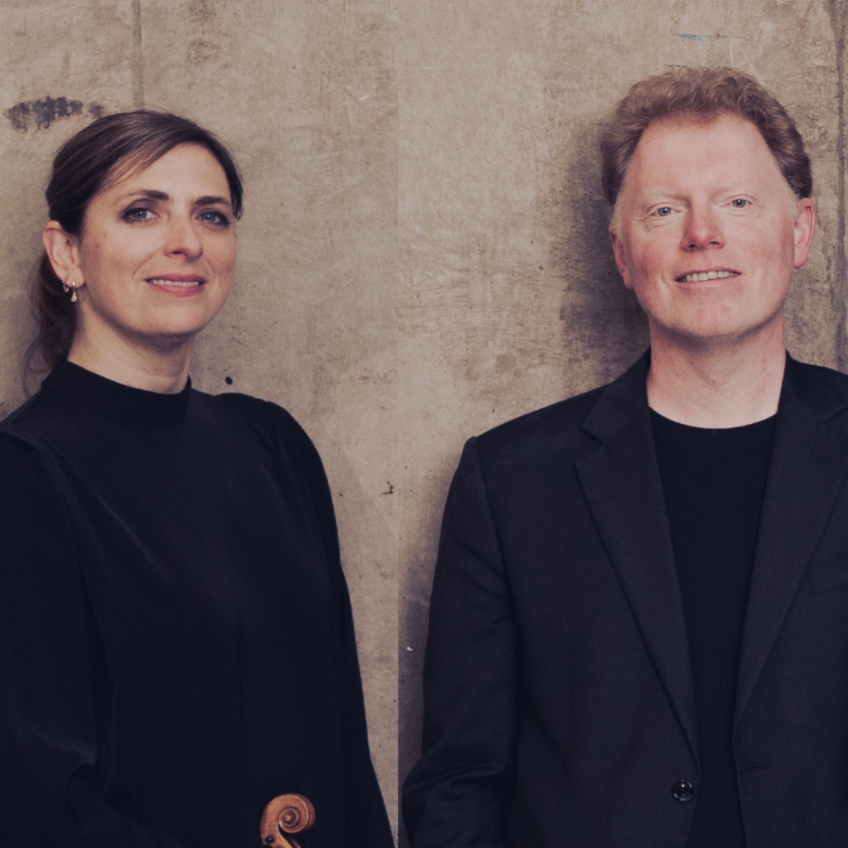Wrapping their virtuosity and togetherness around an ingeniously well-balanced programme of Mozart, Schumann and more besides, Ensemble 360’s pianist Tim Horton and violinist Claudia Ajmone-Marsan brought an evening of striking, exciting musical contrasts. Different moods and styles resulted not just from playing works by different composers but also within the works of each composer. As ever, interesting, chatty snippets explained how each composition fitted in with events going on in the composer’s live’s at the time.
First up were the two movements of Mozart’s Sonata in A, K 305, inspired by Joseph Schuster’s piano and violin duets and written in the same year as tonight’s other two Mozart pieces, 1777/78, when he was in Mannheim and Paris. Alongside typical, trilling, tripping Mozartian chirpiness and playfulness, and chords familiarly strident and stately, a more lyrical, soulful melancholy takes a turn before the music dances back once more with a smile.
Next, with dramatically different tone and intriguing name – Robert Schumann’s F-A-E Sonata (Movt 2). Originally, the movements of the full work were written by three different composers (Schumann, Brahms and Schumann’s pupil Dietrich) in 1853 as a gift for violinist Joseph Joachim, who then had to guess who’d composed each. If he got it right, he guessed that Schumann wrote the second and fourth. Since Frei aber einsam – free but lonely – was Joachim’s motto, the composers had the brilliant idea of specifically basing their work on the notes F, A and E. Good game! (Schumann later took the two movements he’d written and added two more for his Violin Sonata No 3 in A minor, but the full FAE Sonata was published only in 1935.) With soulful, tuneful lyricism, the short, touching, highly pleasing second movement was played tonight before everyone was suddenly propelled by a fast-forward into 1992.

Witold Lutoslawski’s Subito was written in 1992 as a competition piece to challenge a violinist’s virtuosic excellence, in this case Claudia Ajmone-Marsan’s, though total togetherness in the technical mastery of this fabulously integrated score does involve both players, of course. It was written just as Lutoslawski was diagnosed with cancer and it turned out to be the last piece he ever wrote. In the breathless space of just four minutes emotions galore pour forth in stunning musical form: frenzied, sizzling fireworks and frantic outbursts suggesting anger, despair and rebellion, interspersed with sweet, heart-rending lament and sadness, are accompanied by doom-laden runs, pacings and crashes from the piano, underpinning the violin’s breathless, headlong tumblings and desperate, scratchy scrapings, and what feels, at times, like increasingly intense weeping and woeful cries for help. Audience and players alike were palpably gripped.
Then back to Schumann. His Sonata for Violin and Piano in A Minor Op 105 was written in less than a week in 1851 during one of his various, rapid bursts of inspiration, inspired, perhaps by a mood bout that we might these days term bipolar. Tuneful beauty and catchy motifs ebb and flow in the wonderful interplay and integration of the two instruments as passages travel from delicately quiet and thoughtful to urgently intense and turbulent in another very intimate piece.
Strong contrasts continued after the interval with two more Mozart sonatas and a Messiaen in the middle. Mozart’s Sonata for Violin and Piano in E Minor K 304 was written on tour with his mother in Paris in 1778, where he was not having a good time at all, but all turned to real disaster when his ailing mother actually died there. This may explain why the sonata’s in a minor key he seldom used and certainly has, in part, a bleak, melancholic, more deeply soulful mood.
Then it was back to the future again with Olivier Messiaen’s Theme and Variations (five) of 1932. Messiaen was a chap who derived intense joy from his love and reverence for the natural world (especially birds and birdcalls) which he combined with ecstatic religious fervour. This, his first chamber music composition, was written as a wedding present for his wife, violinist Claire Delbos. With contrasting shades of dynamic and tempi, a plaintive, sensitive beauty gradually, eventually, gathers intensity and heads to fiery climax and soaring, lyrical heights before slowly returning to restful peace in yet another thoroughly riveting piece.
Finally, to send everyone dancing out the door on a high Mozart’s Sonata for Violin and Piano in G, K301 brought up the rear, completing this fabulous programme of pieces. Splendid stuff!
Eileen Caiger Gray




